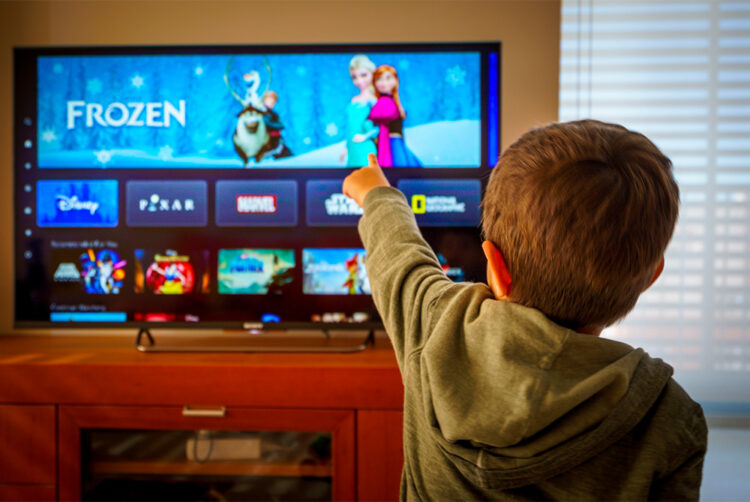How Disney+ can capitalise on its switch to AVOD

Opinion
Premium insights into consumers’ viewing preferences are essential for successful results.
Disney+ hasn’t even reached its third birthday and it has already become one of the world’s largest streaming platforms with 152.1 million subscribers worldwide. Flagship shows like WandaVision and The Mandalorian from its Marvel and Star Wars brands have added to the vast existing Disney catalogue to help create value for today’s viewers, but headwinds are increasing for streaming businesses.
The current cost of living crisis will doubtless prompt consumers to re-evaluate their priorities and tighten their purse strings. In the first three months of this year British households cancelled around 1.5m video on demand subscriptions, though Disney+ “bucked” the trend in Q2.
Significantly for both Netflix and Disney+, they also are effectively single-service in that they only offer streaming (with a sprinkling of gaming from Netflix) versus the bigger tech companies which can provide access into their wider ecosystems within the subscription price. As such, the streaming-only giants may suffer even more from tightening budgets.
Netflix—after years of resistance—recently confirmed ads would be arriving in early 2023. Disney+ confirmed it will introduce ad-based options from the 8th of December, starting in the US before expanding to other markets including the UK and Europe. This shift will open the door to new, exciting opportunities for publishers and advertisers alike.
So why should the industry welcome the arrival of new options to help consumers access the content they want without huge price tags—and how can publishers and advertisers capitalise on this opportunity?
We’ve come so far…
Consumers crave convenience—they want to be able to consume their favourite content in a way that fits into their lifestyle. This is why streaming platforms have become so popular—they have tapped into our desire to be able to access quality content without a wait.
However, the costs of maintaining huge libraries of content while continuing to add new content are not small, and without continued subscriber growth, some of the SVOD services may struggle to create a sticky subscription product.
This is where those aforementioned headwinds close in. As subscriber growth slows due to both saturation and a nervous consumer, the costs of creating a service worth keeping start to mount. Hence, the growing trend to diversify revenue streams to help navigate this challenge. Ad-funded tiers are one way to help close that gap on both sides.
Samsung Ads’ research, in partnership with global market research agency Verve—carried out across 700 Smart TV users—indicates that consumers would consider ads as a reasonable trade-off in return for this continued convenience. Over two thirds (69%) of UK consumers believe that it is acceptable to watch ads on their TVs in return for free content.
But there is an asterisk next to this. Consumers expect bespoke, personalised experiences. Keeping user experience at the heart of the platform is essential, and this means keeping ads relevant.
Relevance is key
Disney+ and Netflix have more than 370 million global subscribers between them. The forthcoming arrival of ads on both platforms will be welcomed by advertisers, but a touch of caution is still required. Premium insights into consumers’ viewing preferences are essential for successful results.
Viewers don’t want to be bombarded with irrelevant, excessively long ads. Samsung Ads found that 63% of audiences suggest that the relevancy of ads was a significant factor in determining how willing they were to accept advertising on their TV services. Delivering relevant ads is key to maximising AVOD’s potential.
Ads are considered part-and-parcel of linear viewing experiences, but they are not accepted so readily on streaming services unless they prove value through relevance and quality.
But this can actually be a good thing—by utilising the insights derived from CTV and the streaming platforms, advertisers can ensure their ads are effective and add to a better viewer experience.
In fact, free, ad-supported TV (FAST) ads in our study had the highest rate of viewer engagement (48%) across all TV platforms. Developing a more engaged viewer base will attract even more advertisers to the platform. Almost half (48%) of Samsung Ads’ respondents believed that FAST ads were relevant, compared to 35% on linear and 31% on broadcaster video-on-demand (BVOD).
The platform where dreams come true?
Disney+’s well-stocked content catalogue continues to attract new viewers, but now is not the time to put its foot on the brakes.
The subscriber model has been dominant amongst streaming platforms since Netflix first ventured online more than fifteen years ago. However, FAST models have started to grow in popularity in recent years, led by the likes of Samsung TV Plus, Rakuten, and Pluto. With consumers’ economic troubles showing no signs of abating, switching or at least including a FAST model could be positive news for subscription publishers. Meanwhile, this diversification of the streaming space towards more ad funded models makes streaming an even more exciting opportunity for advertisers.
Disney+’s ability to consistently deliver convenient, relevant experiences will dictate whether changing strategy is its magic carpet to future success—or a straight return to Netflix’s shadow.
 Alex Hole is vice president of Samsung Ads Europe.
Alex Hole is vice president of Samsung Ads Europe.




